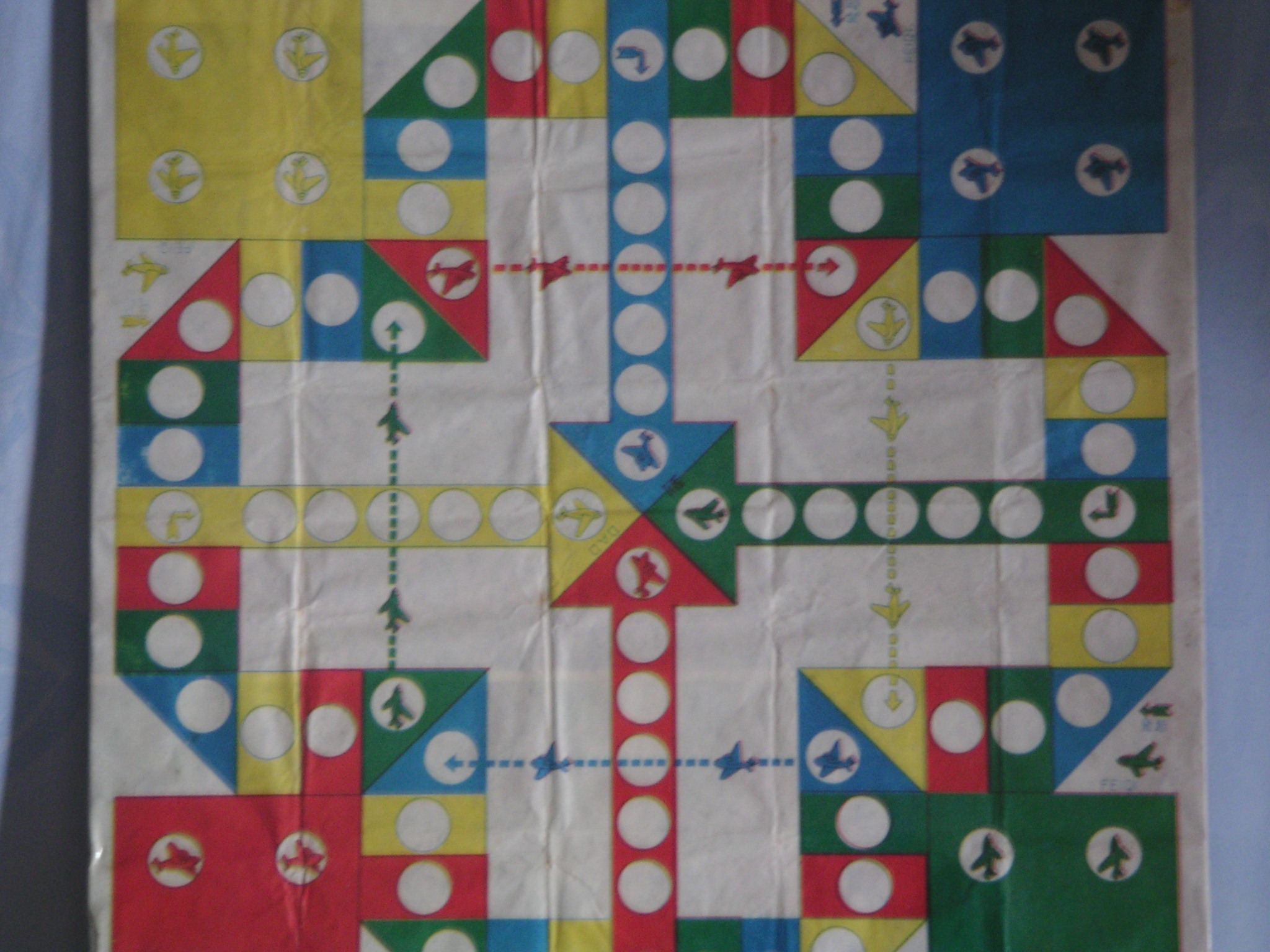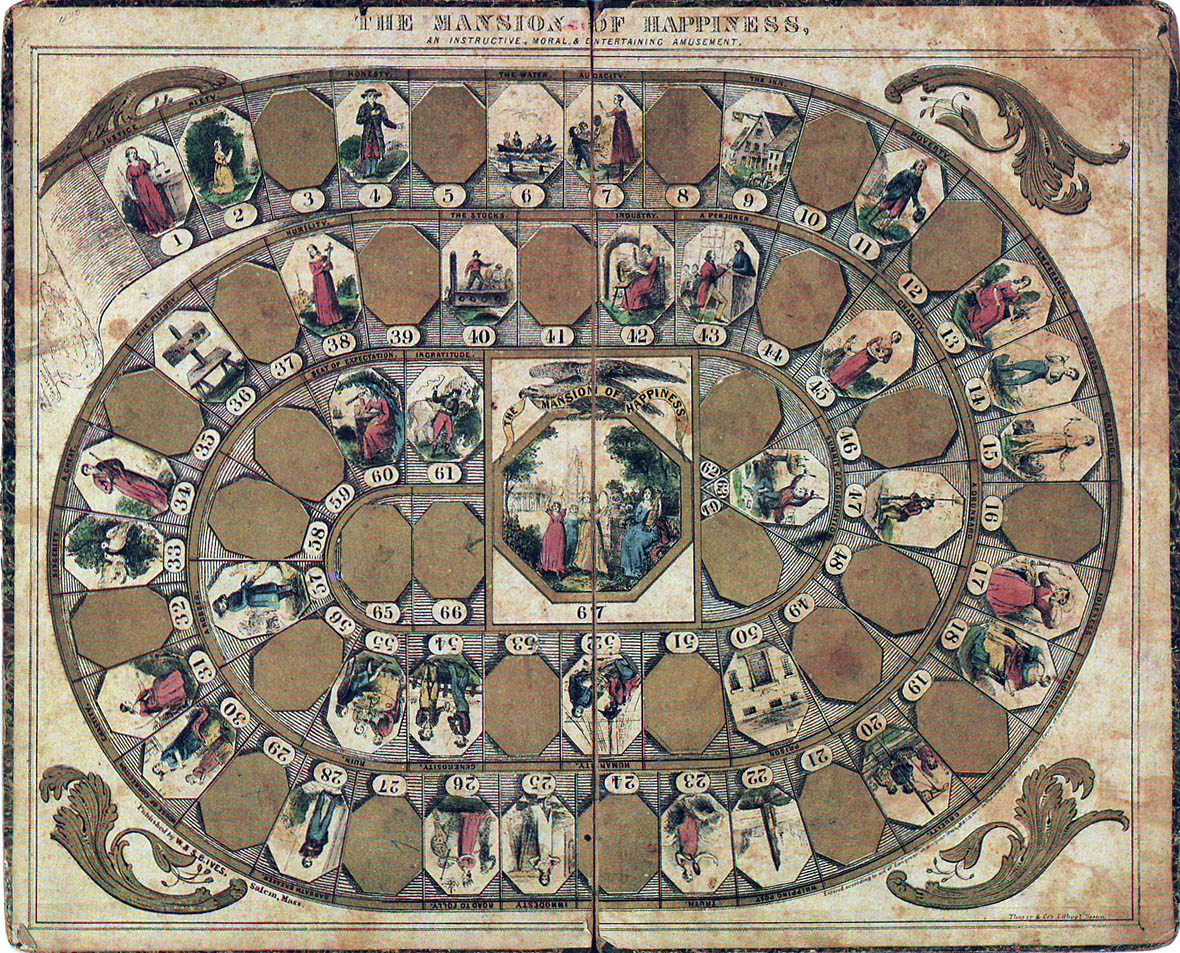|
Yut
Yut Nori, also known as Yunnori, Nyout, and Yoot, is a traditional board game played in Korea, especially during Korean New Year. The game is also called ''cheok-sa'' or ''sa-hee''. The combining-form ''-nori'' means 'game'. Although the origins of this popular family game are unclear, some research suggests that yut was played as early as the Three Kingdoms (57 BCE – 668 CE). The ''Taiping Imperial Reader'' states that people of Baekje played a board game similar to Po Yut, which is believed to be similar to Pachisi, a board game originating in India. There is a folk explanation for the game, describing a bet by some villagers to raise five different kind of livestock: pigs, dogs, sheep, cows and horses. Each of the villagers would raise only one type. The board and the game are known to have been used in casting hexagrams, particularly in mountain-areas and small farming-villages, but this is no longer practiced. Equipment The board (''mal-pan'', 말판) is normally made o ... [...More Info...] [...Related Items...] OR: [Wikipedia] [Google] [Baidu] |
Yut Board
Yut Nori, also known as Yunnori, Nyout, and Yoot, is a traditional board game played in Korea, especially during Korean New Year. The game is also called ''cheok-sa'' or ''sa-hee''. The combining-form ''-nori'' means 'game'. Although the origins of this popular family game are unclear, some research suggests that yut was played as early as the Three Kingdoms (57 BCE – 668 CE). The ''Taiping Imperial Reader'' states that people of Baekje played a board game similar to Po Yut, which is believed to be similar to Pachisi, a board game originating in India. There is a folk explanation for the game, describing a bet by some villagers to raise five different kind of livestock: pigs, dogs, sheep, cows and horses. Each of the villagers would raise only one type. The board and the game are known to have been used in casting hexagrams, particularly in mountain-areas and small farming-villages, but this is no longer practiced. Equipment The board (''mal-pan'', 말판) is normally made o ... [...More Info...] [...Related Items...] OR: [Wikipedia] [Google] [Baidu] |
Traditional Games Of Korea
Traditional games of Korea (; ) have been influenced by the culture, history and environment of the Korean Peninsula. Koreans have enjoyed games throughout history with family and friends, and the games have created a sense of community. The most popular traditional games are Jegichagi, Neolttwigi, Ssireum, Tuho, Hitting Tombstone and Yutnori. Characteristics Korean traditional games originated from folk beliefs. The peninsula has been agrarian since ancient times, and Koreans have believed in gods who protect nature and their lands. Exorcisms were performed to increase crops and animal well-being; singing and dancing were popular activities. Traditional games developed during this early period. Although many folk beliefs have disappeared, the games continue to be played. The names and rules of the games differ by region. In Gyeonggi-do, Gonu is called "Gonu, Goni, Ggoni". Under Japanese rule, nearly all traditional games in Korea disappeared. Most games (such as Tuho, Ssireum ... [...More Info...] [...Related Items...] OR: [Wikipedia] [Google] [Baidu] |
Cross And Circle Games
Cross and circle is a board game design used for race games played throughout the world. Design The basic design comprises a circle divided into four equal portions by a cross inscribed inside it like four spokes in a wheel; the classic example of this design is Yut. However, the term "cross and circle game" is also applied to boards that replace the circle with a square, and cruciform boards that collapse the circle onto the cross; all three types are topologically equivalent. Ludo and ''Parcheesi'' (both descendants of Pachisi) are examples of frequently played cruciform games. The category may also be expanded to include circular or square boards ''without'' a cross which are nevertheless quartered (Zohn Ahl), and boards that have more than four spokes ( Aggravation, Trivial Pursuit). The game board for the Aztec game Patolli consists of a collapsed circle ''without'' an interior cross and thus has the distinction of being a cross that ''is'' a circle (topologically), wit ... [...More Info...] [...Related Items...] OR: [Wikipedia] [Google] [Baidu] |
List Of Cross And Circle Games
Cross and circle is a board game design used for race games played throughout the world. The design of most cross and circle games involves a circle divided into four equal portions by a cross inscribed inside it; the classic example of this design is the Korean game Yut. However, the term "cross and circle" is typically widened to include boards that replace the circle with a square, and cruciform boards that collapse the circle onto the cross; all three types are topologically In mathematics, topology (from the Greek words , and ) is concerned with the properties of a geometric object that are preserved under continuous deformations, such as stretching, twisting, crumpling, and bending; that is, without closing ho ... equivalent. The Indian game Pachisi and its many descendants are perhaps the most well-known of all cross and circle games. Not all cross and circle games are descended from Pachisi; there are numerous examples of other similar games independently de ... [...More Info...] [...Related Items...] OR: [Wikipedia] [Google] [Baidu] |
Board Game
Board games are tabletop games that typically use . These pieces are moved or placed on a pre-marked board (playing surface) and often include elements of table, card, role-playing, and miniatures games as well. Many board games feature a competition between two or more players. To show a few examples: in checkers (British English name 'draughts'), a player wins by capturing all opposing pieces, while Eurogames often end with a calculation of final scores. '' Pandemic'' is a cooperative game where players all win or lose as a team, and peg solitaire is a puzzle for one person. There are many varieties of board games. Their representation of real-life situations can range from having no inherent theme, such as checkers, to having a specific theme and narrative, such as ''Cluedo''. Rules can range from the very simple, such as in snakes and ladders; to deeply complex, as in ''Advanced Squad Leader''. Play components now often include custom figures or shaped counters, and distin ... [...More Info...] [...Related Items...] OR: [Wikipedia] [Google] [Baidu] |
Lambs And Tigers
The Lambs and Tigers Game locally referred as the Game of Goats and Tigers ( ta, Aadu puli aatam, te, Meka puli aata, kn, Aadu Huli aata) or Pulijudam, is a strategic, two-player (or 2 teams) leopard hunt game that is played in south India. The game is asymmetric in that one player controls three tigers and the other player controls up to 15 lambs/goats. The tigers 'hunt' the goats while the goats attempt to block the tigers' movements. Trivia * This is the ancient game played in southern part of India especially in the states of Andhra Pradesh, Karnataka and Tamil Nadu. * The board is drawn on parapet inside the mahadwara of the Chamundeshwari temple atop Chamundi Betta (hill) in Mysore, Karnataka * This game helps people to develop strategy and concept of teamwork by teaching that even though weak, if united, one can vanquish the stronger enemy as a team. * This game is very similar to the Korean game of Yut. Names * '' Aadu Puli Attam'' (The Goat and Tiger Game) � ... [...More Info...] [...Related Items...] OR: [Wikipedia] [Google] [Baidu] |
IATA
The International Air Transport Association (IATA ) is a trade association of the world's airlines founded in 1945. IATA has been described as a cartel since, in addition to setting technical standards for airlines, IATA also organized tariff conferences that served as a forum for price fixing. Consisting in 2016 of 290 airlines, primarily major carriers, representing 117 countries, the IATA's member airlines account for carrying approximately 82% of total available seat miles air traffic. IATA supports airline activity and helps formulate industry policy and standards. It is headquartered in Canada in the city of Montréal, with executive offices in Geneva, Switzerland. History IATA was formed in April 1945 in Havana, Cuba. It is the successor to the International Air Traffic Association, which was formed in 1919 at The Hague, Netherlands. At its founding, IATA consisted of 57 airlines from 31 countries. Much of IATA's early work was technical and IATA provided input to the ... [...More Info...] [...Related Items...] OR: [Wikipedia] [Google] [Baidu] |
Korean Chess
''Janggi'' (including romanizations ''changgi'' and ''jangki''), sometimes called Korean chess, is a strategy board game popular on the Korean Peninsula. The game was derived from xiangqi (Chinese chess), and is very similar to it, including the starting position of some of the pieces, and the 9×10 gameboard, but without the xiangqi "river" dividing the board horizontally in the middle. Janggi is played on a board nine lines wide by ten lines long. The game is sometimes fast paced due to the jumping cannons and the long-range elephants, but professional games most often last over 150 moves and so are typically slower than those of Western chess. In 2009, the first world janggi tournament was held in Harbin, Heilongjiang, China. Rules Board The board is composed of 90 intersections of 9 vertical files and 10 horizontal rows. The board has nearly the same layout as that used in xiangqi, except the janggi board has no "river" in the central row. The pieces consist of disks mark ... [...More Info...] [...Related Items...] OR: [Wikipedia] [Google] [Baidu] |
Korean Culture
The traditional culture of Korea is the shared cultural and historical heritage of Korea and southern Manchuria before the division of Korea in 1945. Manchuria refers to the ancient geographical and historical region in Northeast Asia, including countries like China and Russia. Since the mid-20th century, Korea has been split between the North Korean and South Korean states, resulting in a number of cultural differences that can be observed even today. the practice of Confucianism and Korean shamanism is deeply rooted in Korean culture. Clothing The traditional dress known as ''hanbok'' (한복, 韓服) (known as ''joseonot'' ��선옷in the DPRK). The ''hanbok'' consists of a shirt (''jeogori'') and a skirt (''chima''). According to social status, Koreans used to dress differently, making clothing an important mark of social rank. Costumes were worn by the ruling class and the royal family. These upper classes also used jewelry to distance themselves from the ordinar ... [...More Info...] [...Related Items...] OR: [Wikipedia] [Google] [Baidu] |
Dongguksesigi
Dongguksesigi (동국세시기,東國歲時記) is a book explaining the traditional customs of the year in Korea, written during the Joseon Dynasty Joseon (; ; Middle Korean: 됴ᇢ〯션〮 Dyǒw syéon or 됴ᇢ〯션〯 Dyǒw syěon), officially the Great Joseon (; ), was the last dynastic kingdom of Korea, lasting just over 500 years. It was founded by Yi Seong-gye in July 1392 and re ... by the scholar Hong Suk Mo. The book, finished in 1849, explains the origin of each custom in detail. References 1849 books Joseon dynasty works {{korea-hist-stub ... [...More Info...] [...Related Items...] OR: [Wikipedia] [Google] [Baidu] |
Korean Shamanism
Korean shamanism or Mu-ism is a religion from Korea. In the Korean language, alternative terms for the tradition are ''musok'' () and ''mugyo'' (무교, 巫敎). Scholars of religion have classified it as a folk religion. There is no central authority in control of the religion and much diversity exists among practitioners. The ''musok'' tradition is polytheistic, promoting belief in a range of deities. Both these deities and ancestral spirits are deemed capable of interacting with living humans and causing them problems. Central to the religion are ritual specialists, the majority of them female, called ''mudang'' (Hangul:무당, Hanja: 巫堂) or ''mu'' (무, 巫); in English they have sometimes been called "shamans," although the validity of this is contested. The ''mudang'' assist paying clients in determining the cause of misfortune using divination. ''Mudang'' also perform longer rituals called ''kut'', in which the gods and ancestral spirits are given offerings of food and ... [...More Info...] [...Related Items...] OR: [Wikipedia] [Google] [Baidu] |
Korea Mal Pan
Korea ( ko, 한국, or , ) is a peninsular region in East Asia. Since 1945, it has been divided at or near the 38th parallel, with North Korea (Democratic People's Republic of Korea) comprising its northern half and South Korea (Republic of Korea) comprising its southern half. Korea consists of the Korean Peninsula, Jeju Island, and several minor islands near the peninsula. The peninsula is bordered by China to the northwest and Russia to the northeast. It is separated from Japan to the east by the Korea Strait and the Sea of Japan (East Sea). During the first half of the 1st millennium, Korea was divided between three states, Goguryeo, Baekje, and Silla, together known as the Three Kingdoms of Korea. In the second half of the 1st millennium, Silla defeated and conquered Baekje and Goguryeo, leading to the " Unified Silla" period. Meanwhile, Balhae formed in the north, superseding former Goguryeo. Unified Silla eventually collapsed into three separate states due ... [...More Info...] [...Related Items...] OR: [Wikipedia] [Google] [Baidu] |





